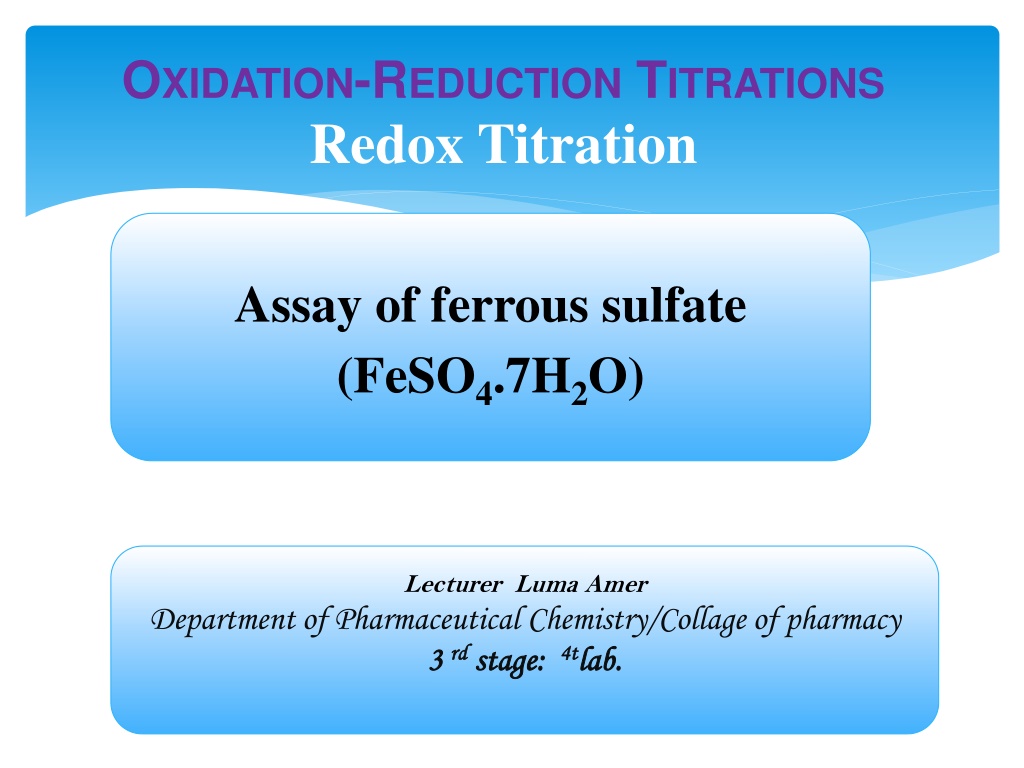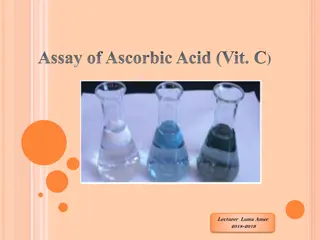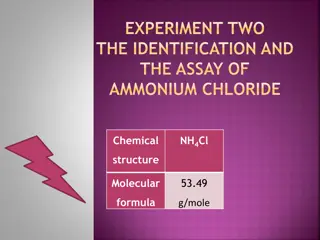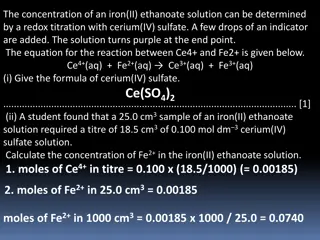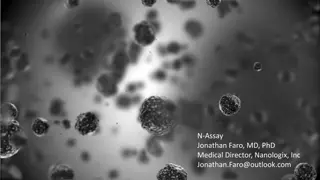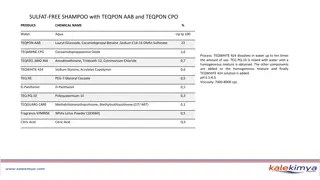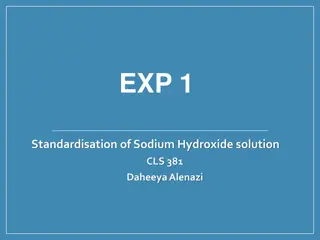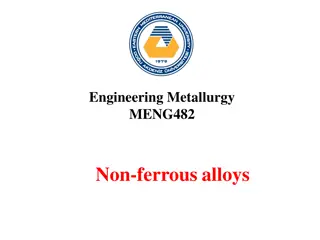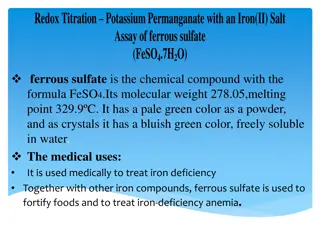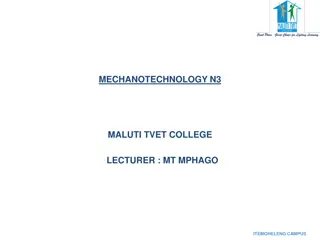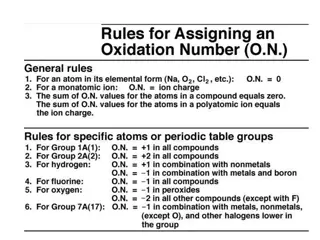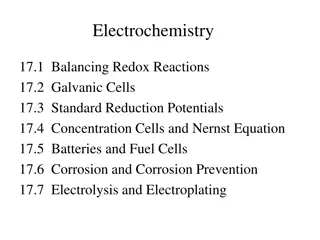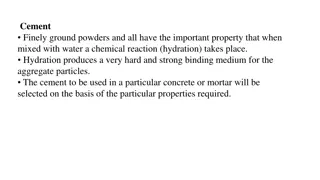Assay of Ferrous Sulfate (FeSO4.7H2O) by Redox Titration Experiment
This experiment involves determining the weight and weight percentage of an unknown sample of FeSO4.7H2O through a redox titration using potassium permanganate solution. Ferrous sulfate, a chemical compound used in medical treatments, is oxidized to ferric sulfate in the presence of sulfuric acid. The procedure includes dissolving a tablet in water, filtering, and titrating to the endpoint, indicated by a pale pink color. By calculating the weight percentage based on atomic masses, the experiment aims to quantify the unknown sample.
Download Presentation

Please find below an Image/Link to download the presentation.
The content on the website is provided AS IS for your information and personal use only. It may not be sold, licensed, or shared on other websites without obtaining consent from the author. Download presentation by click this link. If you encounter any issues during the download, it is possible that the publisher has removed the file from their server.
E N D
Presentation Transcript
OXIDATION-REDUCTION TITRATIONS Redox Titration Assay of ferrous sulfate (FeSO4.7H2O) Lecturer Luma Amer Department of Pharmaceutical Chemistry/Collage of pharmacy 3 3 rd rd stage: stage: 4 4t tlab. lab.
ferrous sulfate is the chemical compound with the formula FeSO4.Its molecular weight 278.05,melting point 329.9 C. It has a pale green color as a powder, and as crystals it has a bluish green color, freely soluble in water. The medical uses: It is used medically to treat iron deficiency Together with other iron compounds, ferrous sulfate is used to fortify foods and to treat iron-deficiency anemia.
side effect of ferrous sulfate tablets: Constipation is a frequent and uncomfortable side effect associated with the administration of oral iron supplements. Stool softeners often are prescribed to prevent constipation. Chemical principle: In acidic solution, potassium permanganate rapidly and quantitatively oxidizes iron(II) to iron(III), while itself being reduced to manganese(II). The half reactions for the process are:
When these half-reactions are combined to give the overall balanced chemical reaction equation, a factor of five must be used with the iron half-reaction so that the number of electrons lost in the overall oxidation will equal the number of electrons gained in the reduction The complete molecular equation should be: 10FeSO4 + 2KMnO4 + 8H2SO4 5Fe2(SO4)3 + K2SO4 + 2MnSO4 + 8H2O
Aim of the experiment: In this Experiment you will Find out the Weight and W% of an Unknown Sample ( solution) of FeSO4.7H2O. Procedure: 1. Carefully crush one tablet of ferrous sulfate (Use a mortar and pestle ) transfer in a beaker , Add 15 ml of distilled water and stir to dissolve the solid. 2. Add 8 ml of 3 Nsulfuric acid, H2SO4 , to the sample and carefully filter the sample 3. Titrate with Potassium Permanganate Solution to the endpoint. The end point is the first appearance of a permanent, pale pink color.
Procedure: 1-Transfer 10 ml from the unk. solution to your conical flask. 2- Add 5 ml of 6 N sulfuric acid, H2SO4 3-Titrate with----- N Potassium Permanganate Solution . 4- Calculate the weight percentage of your sample if you know that: Atomic mass, Fe =56 ,S=32, O=16,H=1 (g/mol) Depending on the theoretical weights of each unknown
Calculation: Wt. practical = N*V*eq.wt* 500/10 Wt. practical = ------ mg Wt.% = Wt. practical / Wt. of sample *100
Notes: Potassium permanganate is one of the most commonly used oxidizing agents because it is extremely powerful, inexpensive, and readily available. Potassium permanganate is particularly useful among titrants since it requires no indicator to signal the endpoint of a titration. Potassium permanganate solutions even at fairly dilute concentrations are intensely colored purple. The product of the permanganate reduction half- reaction, manganese(II), in dilute solution shows almost no color.
FLASK LOCATION WT. theoretical 1 2,8 15g or 15000 mg 2 1,5 20g or 20000 mg 3 3,6 26g or 26000 mg 4 4,7 30g or 30000 mg
